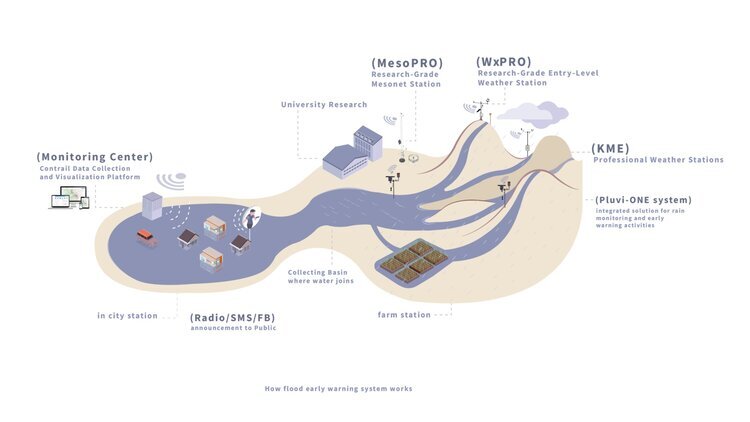OY Guest of Honor At Hadhramaut Flood Warning Conference
In early June 2021, an Organic Yemen team led by Agriculture Department Director Dr. Ahmed Eed visited Hadhramaut Governorate to participate in a conference on early flood warning systems (FEWS). In mid-April 2021, Tarim, Seiyun and other key and historical cities of Hadhramaut were hit by intense rain and flooding. These events caused loss of life and irreparable damage to many areas, and Organic Yemen was honored to be invited by the Hadhramaut deputy Governor’s office to brief local officials on options for setting up FEWS to mitigate future such catastrophies.
Yemen Climate Change Increasing Flood Damage
In April 2021, torrential rains caused widespread and severe flooding in many areas of Hadhramaut, as well as other regions of Yemen. In Tarim, the homes of 167 families were partially damaged or completely destroyed, and thousands were displaced. From March-August 2020, scarcely any major city of Yemen was spared deadly floods. Mareb, Ta’iz, Abyan, Sanaa…the list of places and human lives affected goes on and on.
Yemen climate change is one factor affecting flooding, with cases of severe weather increasing in frequency and intensity. Climate change has also led to increasing temperatures and lower performing agriculture, which in turn feeds into desertification and crop failures. This damage to agriculture not only affects food security and economic livelihoods, but also removes critical natural barriers which otherwise would slow down and absorb flood waters.
Further contributing to the damage caused by floods is the general lack of warning officials and the public receive. In Wadi Hadhramaut , flash floods often originate in upstream wadis and mountains. When the flood waters arrive, it is often suddenly and by surprise. Effective early warning would enable people to get to safety and for officials to prepare protection and evacuation measures.
Organic Yemen Guest of Honor at Flood Conference
In order to address these important issues, a conference was held in Seiyun city in mid-June under the auspices of the Deputy Governor for Hadhramaut Wadi. The conference was coordinated by the General Manager of the Ministry of Agriculture’s Seiyun Office Mr. Shukri Bamusa, and was Chaired by Assistant Deputies Mr. Hisham Alsaeady and Mr. Abdalhadi Altamimi. Also in attendance were thirty other high-level attendees including the General Managers (GMs) or their representatives of Agriculture, Environment, Agriculture Research, Seiyun Airport, Water Resources and Planning & Organizing Department.
The meeting was opened by Mr. Altamimi, who referred to the devastating flooding that had taken place over the past years and the Governorate’s determination to avert future repeats of the situation. Officials discussed many root causes of the damage, such as unauthorized construction in flood-vulnerable areas, desertification and the lack of a coordinated flood early warning system (FEWS).
Agriculture Director Dr. Ahmed Eed Presenting Flood Early Warning System Proposals
Dr. Eed was then invited to give his presentation of FEWS, which included:
A summary of the climate change and other factors leading to increased flooding in Yemen.
An overview of flood warning system design, which includes:
Remote weather stations collecting real-time rain and climate data in mountains and upstream wadis where flood originate.
Water level sensors in collecting basins where two or more wadis meet.
A monitoring station which uses analytic software to generate alarms when unsafe levels are reached.
Communication options to alert officials and the public via a number of possibilities, such as radio, SMS, Facebook or an official website.
What specific equipment and communications are needed for the network to function.
Approximate cost of different size systems.
Next Steps in Creating a Wadi Hadhramaut Flood Early Warning System
Mr. Alsaedy welcomed the passionate and in-depth discussion, and encouraged participants to continue working on a variety of proposals to address the severe flooding affecting Wadi Hadhramaut. At the same time, he and other officials agreed that implementing a flood early warning system, even a small-scale pilot, was essential and should be done as soon as possible. Doing so would enable authorities to begin warning citizens of coming danger, and save lives and property. Even a small system with a few remote sensing locations would also begin building data histories of flood events, which would help make future analysis and alerts more and more accurate.
An Example Flood Early Warning System for Wadi Hadhramawt
An initial FEWS could consist of several weather stations that measure rainfall and water level, and provide that information in real-time to analysis software at a monitoring station. Each station could be located in a different upstream wadi, or mountain where flash floods originate.
Data from those stations would be sent to a central monitoring location where alarms would be triggered in the event of a coming flood. Local officials could use those alarms to prepare a response, and warnings could be shared with the public to save lives and property from damages.



